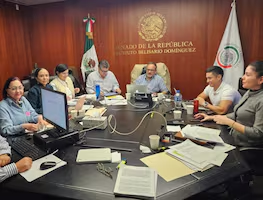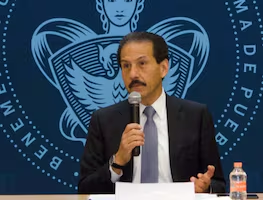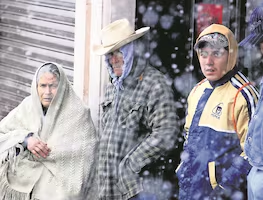Más Información

“Somos México” busca su registro como partido político; Frente Cívico Nacional y México Unido lo presentan ante el INE

Tramita o renueva tu credencial del INE para participar en el elección judicial; esta es la fecha límite

Primeros deportados detenidos en redadas de Trump llegan a Tijuana; “nos agarraron trabajando”, cuentan

Inician entrevistas vía Zoom para aspirantes a elección judicial; piden estar atentos al correo electrónico

Confirma tribunal que exrector de la BUAP está libre de cargos; carecen de elementos probatorios, aseguran

Frente frío 24 y masa ártica golpean México con lluvias y ambiente gélido; evento de “Norte” afecta Tamaulipas y Veracruz
Leer en español
On average, in Mexico , three women die daily for causes related to birth and post-partum . From 2007 to 2017 , 11,650 maternal deaths were registered; 30% of them lived in rural areas of the country, according to information of the Ministry of Health (SSA) .
“Maternal death has the face of poverty . The most vulnerable groups are those that have less immediate access to clinics ,” asserts Hilda E. Argüello , member of the Maternal Mortality Observatory.
The causes of the situation of these regions have been the same during the last decade. Hemorrhages before and after the birth and eclampsia are the main medical complications that threaten pregnant women; they are all preventable situations , according to specialists.
“Maternal deaths can be prevented, because they have to do with things that the Healthcare system could have foreseen and given adequate care ,” explains I sabel Fulda Graue , coordinator of research of the Group of Information on Reproductive Choice (GIRE).
Although the efforts of the government have focused on every pregnant woman in Mexico to have access to health insurance , this does not guarantee that they will not lose their lives. Out of the more than 11,000 deaths registered, 7 out of 10 were enrolled in a state health insurance , according to the open data of the healthcare sector.
Pending issues of the government
In 2000 , Mexico was part of over 150 countries that signed the Millennium Development Goals proposed by the United Nations .
The fifth of these points said that the government had to reduce the Maternal Mortality Ratio (MMR) to 22 deaths for every 100,000 children born alive for 2015 . The goal was not met and that year 40 deceases were reported for every 100,000 births . Upon the difficulty to reach the goal, the UN r econsidered the number to 70 , with which the government was freed from the pressure. The new objective is focused on the most vulnerable groups .
To hinder th e index of maternal deaths , vulnerable groups are the focus of attention.
“There have been advances in the reduction of maternal mortality in the country. We went from 49 to 34 and we have a preliminary number of 30 for 2018 , although it is not official, yet.
“[Currently] we’re focusing on the whole indigenous population , which has the higher ratio of maternal mortality ,” explains Erika Paola García Flores , director of Maternal and Perinatal Healthcare of the Ministry of Health in interview with EL UNIVERSAL .
The main reason for that effort is because despite the reduction of maternal deaths in the country, only in 2017 there were 14 entities registered with numbers exceeding the national MMR , which back then was of 39 . Guerrero, Chihuahua, Baja California, Tabasco, Chiapas , and Mexico City reported, on average, 58 deaths of women for every 100,000 children born alive.
3 women die daily giving birth: Ministry of Health
One of the most complicated tasks is to have an integral policy to mitigate maternal mortality in the country because each state has its particularities and advances differently, asserts García Flores . This has prevented Mexico from meeting international standards .
“It is such a complex problem that it requires the analysis of each situation in a very specific way, not even by state, but by hospital ,” asserts Fulga Graue from GIRE.
Even though public policies in the last years have focused on social programs and conventions in the healthcare sector , what still fails is the implementation . Corruption and inequality have contributed to the persistence of this problem, comments Fulda Graue.






